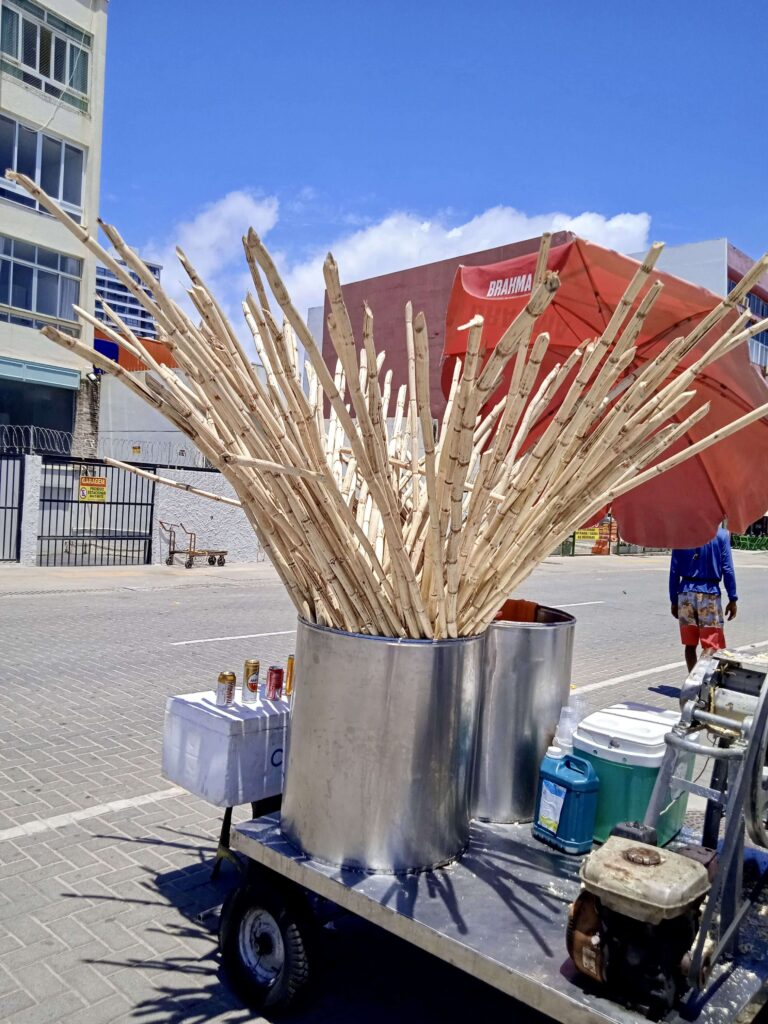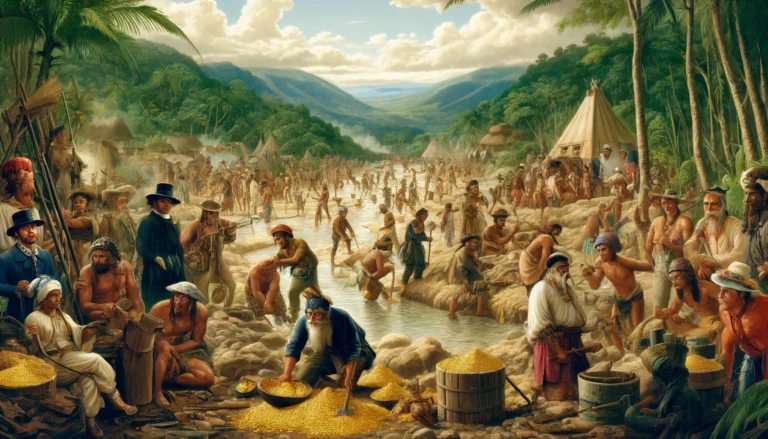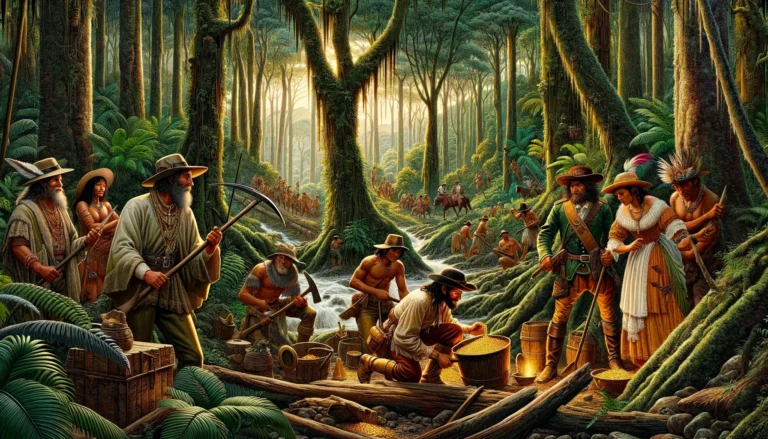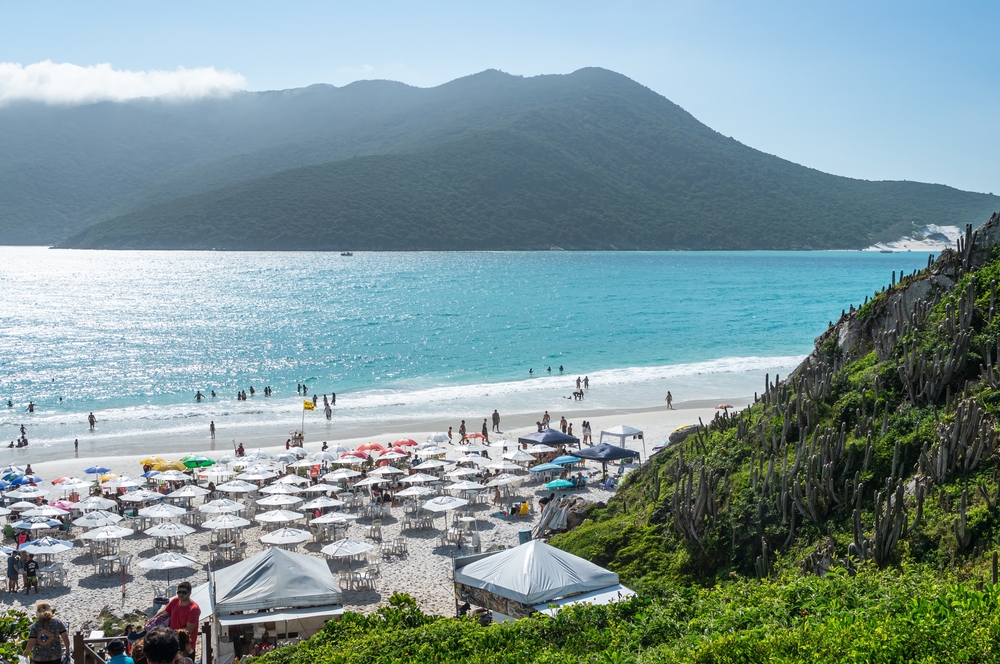In 1551, Brazil laid the foundation of what would become a cornerstone of its economy: the sugarcane industry. Positioned in the tropics, Brazil’s climate offered the perfect conditions for sugarcane cultivation. The introduction of this crop aligned with the global rise in demand for sugar, positioning Brazil as a key player in the international trade. As sugarcane plantations spread, they transformed the landscapes and economies of the Brazilian territories.
The sugarcane industry was not only about agricultural production; it also had profound implications on the social structure of Brazil. The labor-intensive process from planting to harvesting required a large workforce. This demand was met by enslaved Africans, marking the beginning of a dark period in Brazilian history. The reliance on slave labor for the operation of sugar plantations in Brazil had a lasting impact on the demographic and cultural composition of the country.
Brazil’s sugarcane industry during the early colonial period set the stage for the country to become one of the world’s leading sugar exporters. This economic shift was a critical development in the history of sugar cultivation, representing a significant transformation in global trading patterns and the making of a colonial economy centered around a singular cash crop.
Table of Content
ToggleOrigins of Sugarcane Cultivation in Brazil
Sugarcane cultivation in Brazil began in the early 16th century, marking the start of an industry that would have profound implications for the region’s economy and society. This section explores the initial introduction, growth, and the crop’s role in broader Atlantic trade networks.
Introduction of Sugarcane to Brazil
The Portuguese brought sugarcane to Brazil, capitalizing on the conducive climate and virgin lands of regions such as Pernambuco and Bahia. Influenced by prior success on islands like Madeira and the Azores, they replicated the agricultural system in the New World around 1551. The transition of sugarcane agriculture from the Old World to Brazil was a strategic move to meet increasing European market demand for sugar.
Initial Growth and Expansion
Sugarcane’s early growth in Brazil was fostered through the establishment of captaincies, a system of land grants that delegated control to Portuguese settlers. São Vicente, among the first captaincies, was instrumental in pioneering the crop’s cultivation. Expansion across the fertile Brazilian coast swiftly followed, propelling regions like Brazil and São Vicente to become heartlands of sugar production.
Notable areas for early sugarcane expansion:
- Pernambuco
- Bahia
- São Vicente
- Reconcavo region in Bahia
Role in the Atlantic Trade
The advent of sugarcane cultivation in Brazil quickly tied the colony into the Atlantic trade system. European nations, including Portugal, the Netherlands, England, and France, were increasingly reliant on Brazilian sugar. This crop became one of the first commodities to underpin the triangular trade between Europe, Africa, and the Americas, vastly influencing the agricultural landscape of the Caribbean and Brazilian economy.
The nexus of sugarcane cultivation and trade also led to the unfortunate rise of the transatlantic slave trade, as African slaves were brought to work the labor-intensive sugarcane plantations, thereby altering the demographic fabric of the region.
Development of the Plantation System
The inception of the sugar cane industry in Brazil around 1551 marked a transformative era where the plantation system centralized sugar as a primary economic driver. This system leveraged intensive labor, forged a landscape dominated by sugarcane, and positioned Brazil as a key player in global sugar production.
Inception of the Engenhos
Engenhos—the Portuguese term for sugar mills—were the cornerstone of the early Brazilian sugar industry. They represented not just the physical infrastructure for cane processing, but also the broader organizational framework for cultivation and production. The first engenho was established in the Northeast region of Brazil, effectively igniting the growth of sugar plantations. These complexes were more than mills; they encompassed vast tracts of surrounding land dedicated to sugarcane cultivation.
Labor and Slavery
The labor required to operate the engenhos was initially sourced from indigenous people, but the hard and often brutal conditions led to a shift toward enslaved Africans. The burgeoning growth of the sugar industry in Brazil catalyzed the expansion of the Atlantic slave trade, with a substantial influx of African slaves occurring by the end of the 17th century. This reliance on slave labor formed a lamentable yet integral element of the early plantation system, underpinning the economic feasibility of large-scale sugar production.
Sugarcane’s Dominance in Agriculture
Sugarcane quickly became the preeminent crop within Brazilian agriculture, as the plantation system favored monoculture—the cultivation of a single crop to the exclusion of all others—for maximal yield and profit. This dominance influenced the social and economic fabric of Brazil, creating a monoculture that shaped regional land use and dictated the rhythm of Brazilian society, particularly in São Tomé and the wider Northeast region of the country. The landscape was transformed as vast plantations were established, optimizing every aspect of sugarcane production from planting to harvest.













One Response